
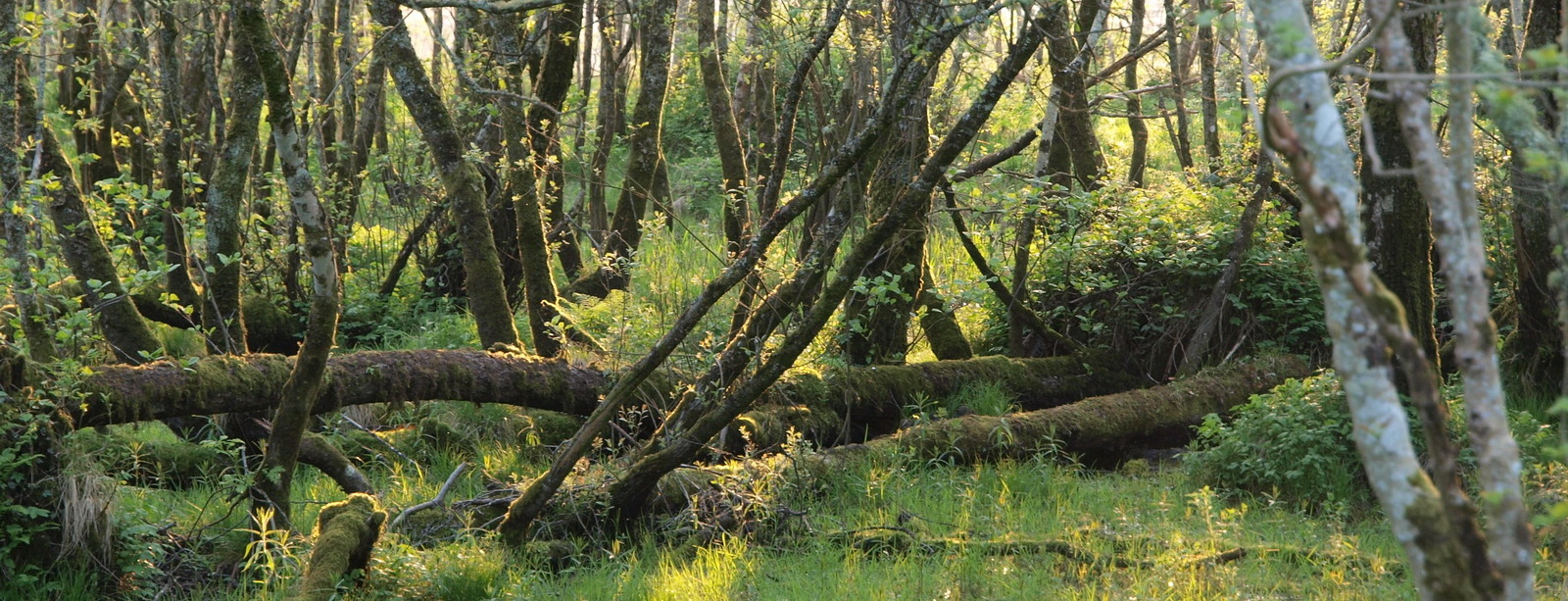


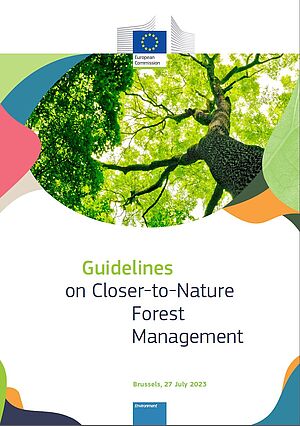
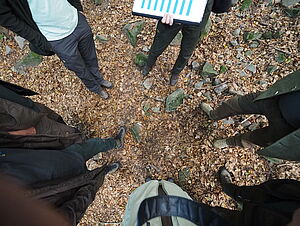
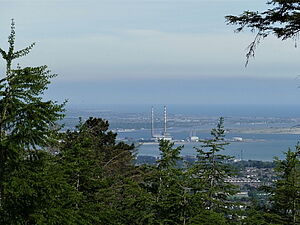
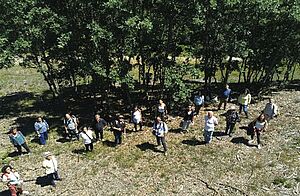
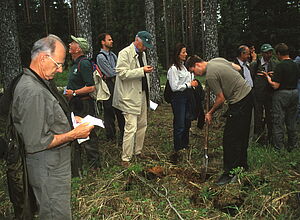
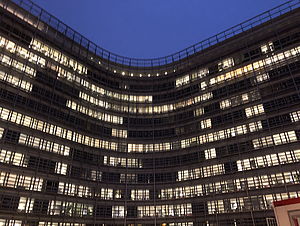
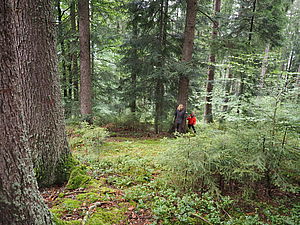
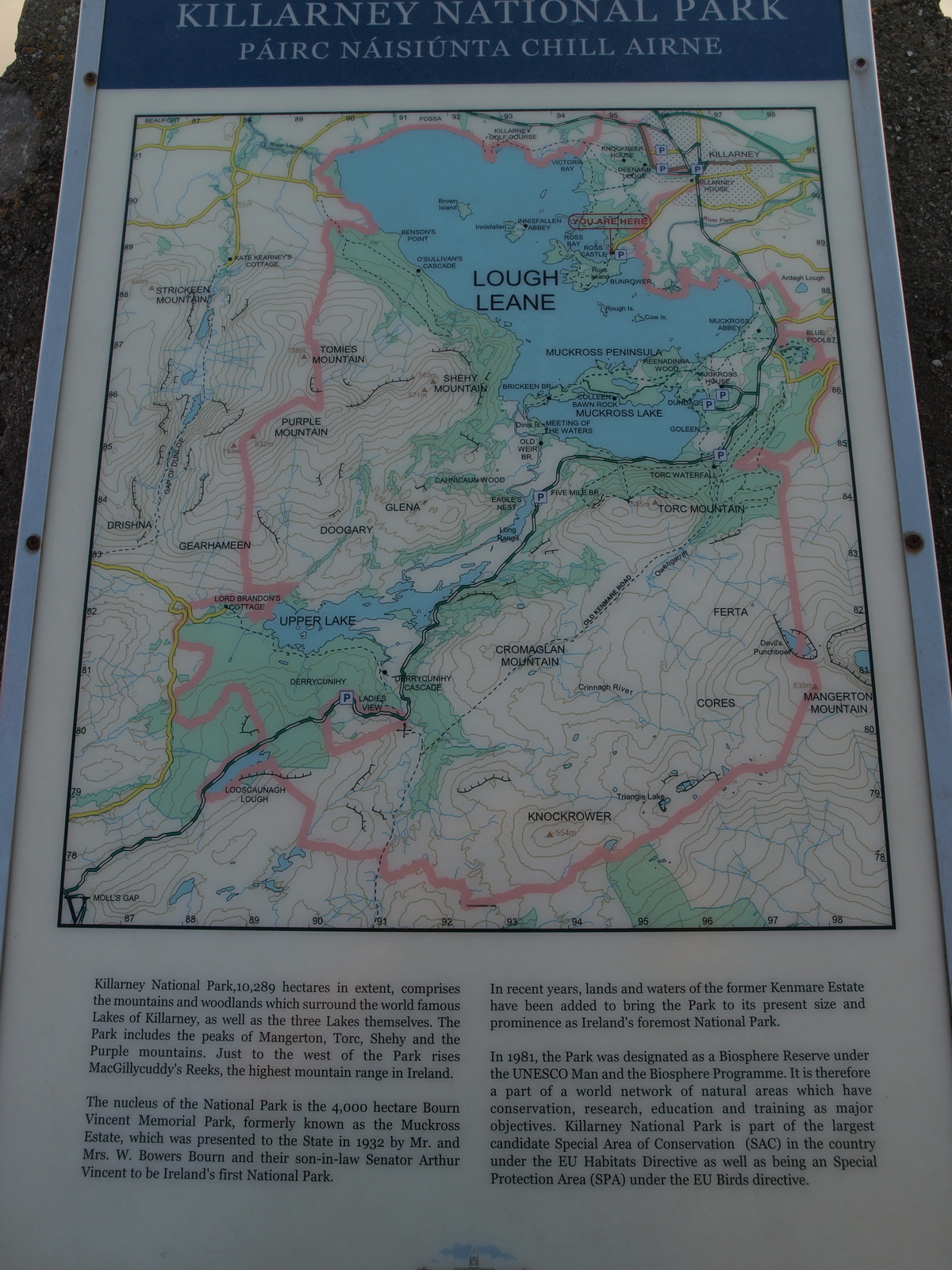
Due to the rapid growth of forestry, there is a lack of experience. Irish foresters and forest owners have looked around Europe and invited the German forestry professor Dr. Hans-Jürgen Otto, former chairman of Pro Silva Europe, for advice.
He has written a guideline for the near-natural management of sitka spruce. Northern Germany has more than 200 years of experience with the reforestation of heathland and this is similar to the Irish areas. The stands of the same age in Northern Germany are very susceptible to storms, the maturing V: age group only reaches 20% of the target area, the income is therefore not sustainable. Otto advises to carry out a site survey prior to afforestation, which in Germany is done in the industrial forest, where it is determined which tree species are suitable for the respective location. Unstable sites and areas with high groundwater levels should be excluded from afforestation with sitka spruce, at least of pure stands. According to Otto's experience, near-natural, unevenly aged stands are more stable than the well-tended age-group forests. In semi-natural forests, tree spacing is irregular, the roots of the groups are intertwined, dense and light areas are alternately present, therefore the groups should be identified and their structure should be taken into account. In traditional selection thinning, the natural rotting structure is destroyed. Otto also refuses to chop down trees left standing at the edges when clearing windthrows, for him these are stability limits. Another of Otto's recommendations was to plant a 20-meter-wide strip of alder on both sides of the streams and rivers, possibly mixed with ash and maple. For certain areas one should consider a preplanting of birch, alder, pine and larch, either two years before the reforestation of the Sitka spruce or at the same time. The loose canopy in a 3 x 3 m or 4 x 3 m bond improves the microclimate, reduces evaporation and the risk of frost. The umbrella can be removed later during the course of frost penetration or trees can be allowed to grow into the stand.
Prof. Schütz from Switzerland advised the Irish forestry service to create example areas with mixed stands and appropriate care, which forest owners can use as a guide.
The experience of Irish forestry could be gathered at the Pro Silva European Conference from 13 to 17 May in the South West of Ireland. 50 representatives of the close-to-nature forestry sector from 23 countries took part in this conference.
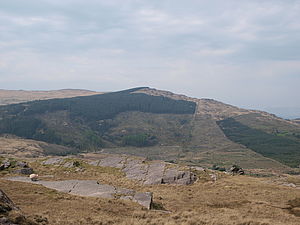
Extensive grazing land now produces little yield, and the industry's demand for wood is high. The EU promotes afforestation and pays premiums, thus slowing down the exodus from agriculture. High rainfall and long growing seasons require good growth performance, but there are also problems and a lack of experience.
Ireland, 80% forested before settlement, had only 1% forest at the turn of the 19th and 20th centuries. Due to the high rainfall of 1,000 to 4,000 mm per year and the failure of vertical drainage, many areas are wet, and the moors account for a fifth of the country's surface area. Reforestation has been taking place since the beginning of the 20th century, initially 3,000 ha per year, but in the 1960s the area increased to 10,000 ha. The accession to the EU in 1973 had a very positive effect, the EU promotes the afforestation of extensive agricultural areas - 50% of the country is pasture land - and also pays premiums for the loss of income due to afforestation. Now 20,000 hectares are converted every year and it is intended to see this through to 2030. More than 400,000 ha have already been afforested and the proportion of forest has risen to 9.5% and is expected to increase to 17% by 2030. The EU mainly promotes private initiative, whereas in 1980 only a few private landowners owned forest, today more than 12,000 farmers own forest. Private afforestation has far outstripped state initiative, with private owners now reforesting nine times more than the state.
In the beginning, low-yield pastureland, wet, boggy areas were covered with rushes and sour grasses, and reforested mainly with sitka spruce. In the meantime, better areas have been converted into forest and these sites are also suitable for more demanding tree species. The Sirk Spruce, which is native to North America, needs at least 1,000 mm of precipitation and it copes much better with the humid locations than our spruce, roots deeper and is therefore less likely to be thrown by the prevailing strong winds and it becomes much less red-rotted.
The reforestation areas are cleared, ploughed and, if necessary, drained with ditches, possibly also limed and fertilized. Annual and biennial container plants are placed in the clods. In addition to the predominantly cultivated sitka spruce, which is also suitable as a pioneer tree species, Douglas fir, white pine, thuje and Pinus radiata are also used for reforestation; the latter thrives very well in a humid climate. The forestry organisation's target is 20 %, deciduous species, indigenous are oak, ash, birch and alder, the well growing maple species and the beech are imported - were not originally represented in Ireland. Hillside areas are not thinned, the emphasis is on industrial timber production. Thinning starts very early, on some areas already at the age of 9 to 12 years and is repeated in intervals of 3 to 4 years. The stands thus maintained are to supply saw timber in the future. The whole afforestation process has been very fast, but the market is only gradually developing. At the moment 3.3 million m3 per year are already being harvested in Ireland and by 2030 it should be 10 million.
The first destination of the excursion was the reforestation of the Tottenham family at Mount Callan, 8 km from the west coast. Robert Tottenham, the chairman of Pro Silva Ireland, who unfortunately passed away a month ago, started reforesting his agricultural land in 1974 because of low yields, 16 hectares a year for over 20 years. Today 400 hectares of the 500 hectare property have been converted into forest, 3,000 cubic metres of timber are already being harvested annually and it is expected that the harvest will increase to 8,000 cubic metres annually. Some stands have already been thinned ten times and the highest tree is 38 m long. The stands are being maintained according to the Pro Silva principle and are to be converted into permanent forest. There is no experience yet whether the strong and long Sitka spruces will withstand the wind.
Unfortunately, the Sitka spruce is attacked by a pest (allatorium), it loses the 3 year old and older needles and this also in the rejuvenation. At Monut Callen there is an experimental area with Thuje, 50 different old trees from all over Ireland were cloned.
Another excursion destination was the semi-state society "Coillte", which looks after the Irish forests. Southwest of Limerick is the Curraghchase Forest, a former manor house covering 247 hectares. The forest is mainly stocked with deciduous species and mixed stands. The stands are partly unequal in age, multi-level and there are already mature old trees. Location and stands are surveyed in a permanent sampling network, which is revised every 5 years. The survey scheme was adopted by the French, which is also used by Belgium and Luxembourg. The management objective is the multi-level permanent forest with single stem use. 20 to 35 cm thick ash trees with thickened roots are sold as special assortment "Holy" at a price of 250,- to 350 Euro per cbm. From this, ball bats are made, which are traded at 20 to 25 € per piece, 300,000 to 400,000 of these ball bats are sold annually in Ireland.
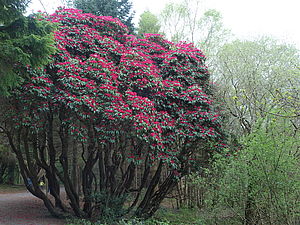
There is no roe deer in Ireland, but there is red deer and in the 19th century sika deer was introduced from Japan. Brown bear and wolf as well as wild boar disappeared with the decline of the forest centuries ago. Lush ground vegetation, especially blackberry becomes a problem for regeneration. The vital rhododendron becomes a difficult to control wood, it has a very strong rash.
The forest park Currraghchase is a popular excursion destination and recreation area, for the provided parking lots a fee is charged: 5 € for the car and 20 € for the bus.
Noble landowners recognised the value of the forest and trees for the beauty of the countryside as early as the 18th century, they created magnificent avenues and parks and planted many exotic trees, including the Marquess of Lansdowne in south-west County Kerry. Within 50 years he created a 24 hectare park with trees from America, Asia and Australia with many rhododendrons and azaleas including tree ferns from Tasmania. The park and the adjoining exotic forest with mighty trees enjoy an increasing number of visitors, but the owner is worried about the renewal of the old trees and the associated costs. For this purpose his park was closed in the last years because of the danger of Phytophthora. His commercial forest is mainly planted with sitka spruce, which grows excellently in the humid climate with 223 rainy days a year and no frost. Littering, difficult terrain and the accumulation of small quantities reduce his yields. In addition, the control of the rhododendron, where he sees an economic way out only by using chemical means, is a major problem.
The beautifully flowering rhododendron, which originates from the Caucasus and came to Ireland via Algeria, is also a plague in the 10,289 ha Killarney National Park. Fighting it there costs between 3,000 and 4,000 euros/ha and about 50 people are involved. Chemical agents are sprayed selectively on the shoots. On 350 ha the rhododendron has been removed in recent years to initiate forest regeneration.
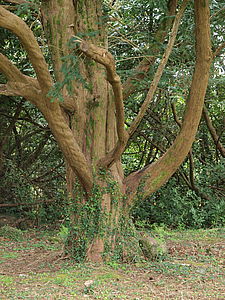
A special feature of this national park are the extensive yew stands covering an area of 25 hectares. In the national park there are autochthonous red deer and naturalized sika deer, too many of them 6 to 8 pieces per 100 hectares and one would like to reduce them to 3 to 5 pieces. On exposed areas up to 28 pieces / 100 ha were counted. The sika deer start to peel the yews, therefore fences were built.
In the natural oak forest with holly as undergrowth there are many rare flowers and plants, especially in the yew forest there are many mosses and lichens, some of which grow on the trees.
Another interesting landscape is "Burren" in the northwest of Limerick, which is similar to the karst in Yugoslavia. The post-glacial tree vegetation was cleared for agriculture, hazel and ash, the latter often as a bush, could be kept in hollows. The hazel is vital there and is kept in check by the grazing sheep. Many epiphytes live on the hazel, as do insects. Earth and water collect in the crevices of the limestone cliffs, which are just over 300 m high, and therefore, despite the bare rocks, there is a rich flora, ranging from Mediterranean to alpine, an El Dorado for botanists.
report by Roman Schmiedler, Austria (2007 written for ÖFZ Austrian Forest Magazine)